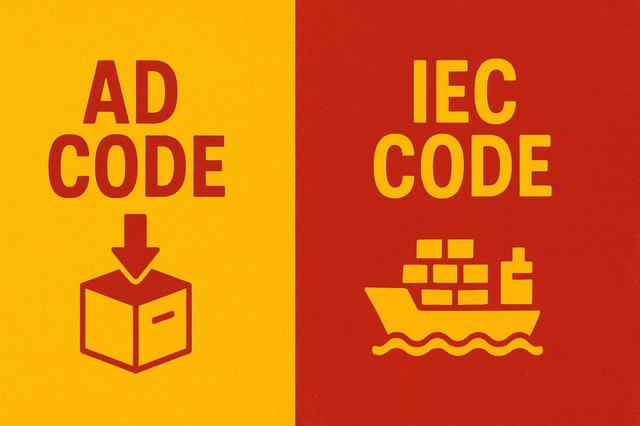
The Definitive Comparison of Carrier Accuracy in Real‑Time Freight Pricing
Real‑Time Freight Pricing
This blog explains the key differences between an AD Code and IEC Code—two mandatory components of export documentation in India. Targeted at first-time exporters and SME freight managers, it simplifies government jargon, outlines step-by-step registration processes, and shows how to move from compliance to shipment execution using Cogoport OS Planning. Ideal for Indian shippers planning their first international export.

Exporting for the first time? You’ve probably heard the terms AD Code and IEC code thrown around—but what do they actually mean, and why are both critical for your first shipment? If you’re navigating export documentation in India, these two codes stand out as essential. This guide breaks it down clearly so you know exactly what they are and how to get them before your goods leave the country.
To start, let’s clarify the basics of each. An IEC (Importer Exporter Code) is a unique 10-digit number issued by India’s DGFT (Directorate General of Foreign Trade) that identifies you as an importer/exporter. An AD Code (Authorised Dealer Code) is a 14-digit number issued by your bank (an authorized dealer in foreign exchange) and is a fundamental requirement for clearing exports through customs. In other words, the IEC gives your business a legal identity in international trade, while the AD Code links your shipments to a bank authorized to deal with foreign currency. Here’s a side-by-side look at their differences:
| Feature | IEC Code (Import Export Code) | AD Code (Authorised Dealer Code) |
|---|---|---|
| Full Form | Importer Exporter Code | Authorised Dealer Code |
| Issued By | DGFT (Directorate General of Foreign Trade) | Your bank (Authorized Dealer), registered via ICEGATE |
| Purpose | Unique identity for any importer/exporter (business’s ID in global trade) | Enables customs to verify your export transactions and receive foreign currency remittance |
| Required For | All imports and exports from India (mandatory for trade) | Customs clearance at port and inward remittance of export earnings (port-wise customs registration) |
| Validity | Lifetime (no expiry; just update details periodically) | Lifetime for a given bank account, but must be registered for each port you export from |
| Format | 10-digit number (PAN-based) | 14-digit number (bank-provided code) |
Think of the IEC and AD Code as two halves of the export compliance puzzle – you need both to legally and smoothly export from India. Here’s why each is indispensable:
The IEC is essentially your business’s passport for international trade. It’s mandatory for anyone looking to import or export — without an IEC, you simply cannot ship commercial goods in or out of India. Once issued, this code stays with your business for life, enabling you to open foreign bank accounts, register on export portals, and claim export incentives.
If IEC is your identity, the AD Code is your anchor at the port. This code links your shipment and customs documentation to a specific bank branch. Without an AD Code registered at the port, you cannot get a Shipping Bill issued on ICEGATE – and without a Shipping Bill, your goods can’t clear customs. The AD Code also ensures foreign currency earnings are routed to the correct bank account and unlocks duty drawback or GST refunds. It connects the financial side of your shipment to your compliance paperwork.
To see how these work together, let’s walk through a real-world example. Meet Rohit, a first-time exporter in Mumbai who’s planning to ship handcrafted textiles to Europe:
Now that your compliance paperwork is sorted, you can focus on the logistics. This is where a digital platform like Cogoport’s OS Planning becomes your best friend. With your IEC and AD Code in place, you’re ready to plan the actual shipment details. Cogoport’s OS Planning tool (shown above) lets you input your origin and destination ports, choose your container type and shipping mode, and instantly view available routes with cost breakdowns and transit times. In just a few clicks, you can compare freight rates, schedules, and even see applicable surcharges or local fees upfront – taking the guesswork out of your shipping plan.
Start your 10-day free OS Planning trial and plan your first international shipment step by step with confidence.

Real‑Time Freight Pricing

Step-by-Step FCL Shipping Guide

India Rescinds BIS Standards, Sparks Market Shift